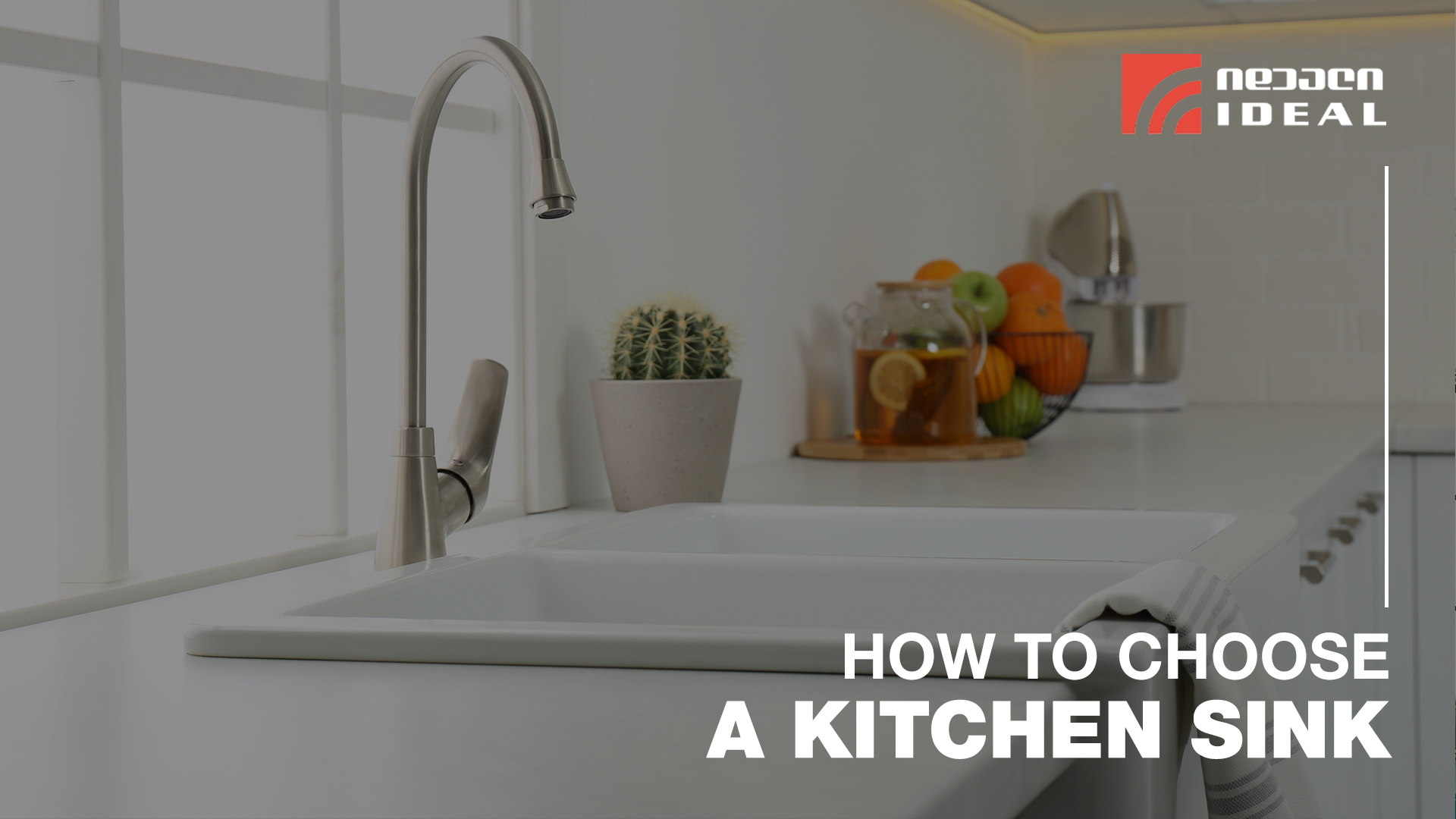How to choose a kitchen sink?
How to choose a kitchen sink?

A kitchen is the heart of any house and a gathering place for people. It is one of the most comfortable spaces, where we can pass the time by drinking coffee with friends, cooking dinner with family members, celebrating success, or simply enjoying a relaxing day we’ve set up for ourselves. That is why, when arranging the kitchen, correctly planning each detail is of crucial importance. The kitchen sink can be an integral part of our comfort. An ideal kitchen sink tends to complement the concepts of interior design and also contributes to the fulfillment of our daily needs.
If you are going to arrange a house soon, you need to keep in mind that the kitchen sink has a significant influence on the room interior in general and, most importantly, on how you select other materials and items. For instance, the kitchen sink dictates decisions on the type of faucet, kitchen fittings, material and depth of kitchen furniture. Given that there is a wide variety of kitchen sinks to choose from, we need to take into account the general interior design so that our selection does not disrupt a unified look.
In addition, we must not forget that the kitchen sink, along with its visual appeal, needs to match our needs and habits. In order to facilitate your decision-making, with the help of this blog, we will introduce you to all the key details needed for finding the perfect sink:
Kitchen sink
When choosing a kitchen sink, firstly, ask yourself the three important questions:
- What type of installation does it require? How will the sink be attached to the surface?
- What is the general configuration and size of the sink required?
- What material would we prefer?
Answering these questions will help us to narrow down our search and focus on the necessary and convenient options.
Size
Kitchen sink sizes are very diverse and depend on the available space and the individuals’ needs.
The most common sinks are:
- one-piece
- double-bowl
- triple-bowl
As a rule, their dimensions start from 22cm, and rarely, long sinks can even reach 220cm.
If you are planning to install the sink on the kitchen countertop to make cooking process even easier, then a 60-90cm sink would be a good choice; the sink of this size does not take up too much space and is comfortable to use.
Sinks which are larger than 75cm have two or more compartments. You will also come across sinks with only one but large compartment. A two- or three-section sink is the best choice for big families and, in general, for a kitchen with large area. When cooking, you can use one side for preparing food and other corresponding needs, while placing dishes in the other section. In addition, two-compartment sinks are a very good solution when you do not want to place newly-washed dishes on the countertop or in the cupboard; in such case, they can be placed in a relatively small section of the sink until they are completely drained of water and dry.
In general, a 90-150cm sink is considered as fairly large. It is a good choice for industrial and professional kitchens, where a large amount of food is washed and prepared and therefore, a lot of dishes are being accumulated.
Material
Apart from arrangement, interior design requires specific maintenance. That is why, when it comes to the kitchen sink, it is important to know what kind of material is comfortable for us. Its visual side and durability will directly depend on the material chosen. The aesthetic side of the sink and its maintenance depend on several factors; first of all, how resistant the sink material is to chemicals and various scrubbing tools. The four most common types of materials are:
- Stainless steel kitchen sink
Stainless steel is one of the most widely used materials in both the traditional and modern kitchens. Its advantages are as follows:
- Light
- Durable
- Compact design
- Easy to look after
Stainless steel sinks offer a variety of choice. At the same time, they are simple and convenient to install. A stainless-steel kitchen sink can be installed both on the kitchen surface and under it.
- Porcelain kitchen sink
For those who love vintage style, porcelain is a sophisticated and traditional choice. One advantage is that porcelain kitchen sinks come in diverse colours. However, those who pay special attention to the durability of material, need to consider that stains can often appear on porcelain and that we are also limited in the use of cleaning liquids when handling this material.
- Granite kitchen sink
A granite kitchen sink adds sophisticated tones to the design of the room. Due to its naturalness, granite is resistant to scratches and stains; given that it is properly looked after, it does not retain even water stains.
- Natural stone kitchen sink
Natural stone kitchen sinks are mostly used when the kitchen countertop colour is meant to be a continuation of the sink colour. In this way, a sense of unity is generated in the interior. However, when choosing a natural stone, we should take into account that the material is quite expensive and, at the same time, requires a special care.




